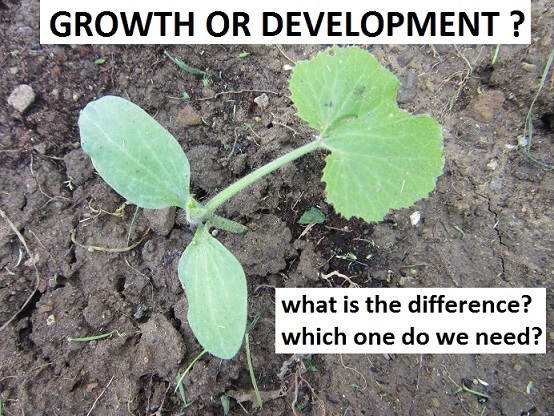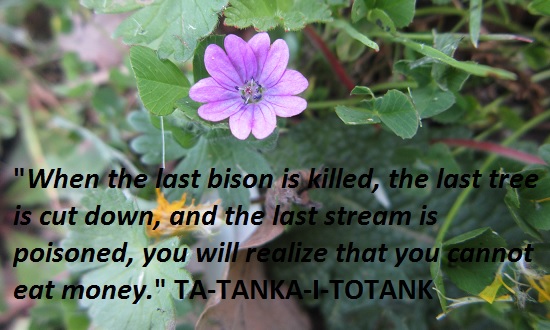Category Archives: English
Why diets don’t work
old videos – da caricare
This is a collection of the most common and evident reasons why diets don’t work.
1. THERE’S NO REAL MOTIVATION TO LOSE WEIGHT.
“I want to be thin a lot. But I want that chocolate cake more.” It is SO TRUE! I like a lot this comic strip that I saw once somewhere, and that I tried to replicate here.
Similarly to many other things in life, there is a price to pay to be lean. If you want to be lean, you have to give up some short term pleasure, like the one junk food provides. Are you available to pay this price or not?
If you diets fail repeatedly because you keep on eating short term delights, it probably means that you’re not motivated enough to lose weight.
After all, considered the option of being fat eating tasty fattening food, and the option of being lean giving up the tasty fattening food, you decided that being fat is ok for you.
2. IGNORING WHAT “DIET” REALLY MEANS.
A lot of people try to lose weight using a “diet”, but do they really understand what a diet is?
Diet has nothing to do with the various “hcg”, “weightwatchers”, “slimfast”, that are basically commercial products created mainly to get your money (from pills, books, programs) and often they promise unrealistic things (for example I personally think that slimfast is an oxymoron, as there’s no “fast” way to go from fat to slim).
Diet is not something you do for a short period (like 3 weeks or 2 months) as an exceptional thing to lose weight. Conceived like this, it is inesorably doomed to fail.
Diet is the practical application, every time you eat, of your nutrition knowledge. It is lifestyle in the kitchen. It is long term. It is realistic. It depends on motivation. And it focuses on quality, on eating nutritious whole foods, rather that on quantity. In fact, counting the calories on a diet is a prehistoric approach, please don’t focus too much on the numbers!
3. THE “LOSE WEIGHT INDUSTRY” IS HAPPY THAT DIETS DON’T WORK.
The commercial diets advertised on magazines, tv, those diets that sell something (like pills, elixirs, bars) are not even created with the purpose of making you lose weight. It’s a business: they want your money.
In fact, the producers of those diets are quite happy to know that people fail in long term weight loss.
Why? Simple: they become repeated customers! It would be so sad if the customers buy their program once, lose their excess weight forever and never come back to spend more money. It’s much better if they fail, or if they only lose some weight for awhile, so they’ll come back to buy some other more powerful, incredible gimmick.
4. THERE ARE TONS OF MISLEADING INFORMATION ABOUT FOOD.
There are too many controversial information about what foods are actually unhealthy and fattening, and what are healthy and really promote weight loss. As consequence, a lot of people are deceived.
There are enormous quantities of fake healthy foods that are actually crappy, processed to the maximum, and fattening. And many diets that are popular and trendy today are based on these products, with the consequence that they never make you lose a pound.
Immediate examples are the foods with healthy claims that invade the grocery stores: there are actually a lot of people who think that “diet” coke, “fitness” sugary bars, “light” cheese”, “special” sugary cereals fit well into a diet regimen.
Furthermore, a lot of trendy diets lay on a series of nutrition myths that will make any attempt, inevitably, uneffective or painful. I still hear people say that white rice is good to lose weight, or that you have to starve and deprive yourself on a diet, or that fruit must be avoided because it contains sugar. And a diet will never work if you don’t get rid of all these misconceptions.
5. ADDING A MAGIC PILL IS NOT ENOUGH.
One of the main reasons why diets don’t work is that people think that they can just add some magic element, like a pill or a bar, to their usual diet composed of a lot of junk foods and it will work. Obviously, it doesn’t.
Overweight depends on your diet as a whole, on the entire set of foods you eat in a day. And if you eat too much food, and the wrong kind of food, you can’t expect that by just adding some pill or potion to it, you will reduce.
I see what people search on the web using some tools provided by the search engines, and there are so many queries like “pills forweight loss”, and “supplements for weight loss” and “shakes for weight loss”. Everybody is searching for something to ADD to their diet. But very few people accept that more than adding new things to their diet, they have to change their diet.
Change is so difficult for many human beings.
6. NUTRITION FIRST, DIET SECOND.
A lot of people don’t succeed with their diets simply because they know nothing about nutrition.
The approach of reaching directly for a diet as a solution for being fat, without learning and understanding what is nutrition first, leads inevitably to failure.
As I often say, nutrition is theory, diet is practice. Diet must be inspired by nutrition knowledge.
But a lot of people never really focus on the important things related to nutrition (like for example eating nutrient dense foods and avoiding empty calorie foods) and jump directly to the diet, and often on things of secondary importance (like the count of calories).
7. DIETS DON’T WORK IN ADVERSE ENVIRONMENTS.
Diet is holistic, meaning that the way you eat is part of a bigger context: where you eat, with who you eat, what time you eat, in what conditions you eat.
You can plan your diet to the last vitamin and the last calorie, but if everyday you find yourself eating lunch in the workplace’s bar, where everything is fattening, or everyday at dinner you eat with your family where no one cares about healthy food but just eats tons of fried stuff, your odds to stay in shape are minimal.
Instead, if you want to succeed, it’s important that you do your best to create the ideal conditions, to surround yourself with health conscious people, and to eat in the right places.
8. PERFECTIONISM IS BAD.
“Oh I shouldn’t have eaten this. Well, I’ll start the diet again on monday.”
The common approach to diet is based on perfectionism. The typical person on a diet thinks: “I’ll stop eating fattening foods until I lose all this extra weight! I’ll do it!”. Then, as soon as they do one infringiment, eating one piece of chocolate or a sneakers bar, they consider the diet broken and splurge on more junk food. That’s exactly the way I used to think, before realizing that also in diet, like in many other things, perfectionism is a real damaging attitude.
Perfection is not human, and a period of “diet” where you can’t absolutely make a mistake can become very sad. This is why it usually lasts for very few days. How many times I heard “I’m on a diet”. Then, at the first infringiment, “oh damn, I’ll start again next monday”. And then next monday, and then next monday. A repeated failure that eventually will make you lose faith in your ability to really manage what you eat.
What do you think? Do you find these reasons familiar? Or did you actually succeed losing weight in the long term with one of those diets advertised on magazines? Share your experience in the comments.
Is craving violence natural… or induced?
I collaborated with one of my favourite Youtube channels, Psychetruth, to the creation of this video about the violence in the media and the psychology of fear. I was inspired by Eckhart Tolle’s book A new Earth. Oprah Winfrey described it as one of the most important books of our time, and I totally agree with her. Enjoy!
Top 10 food advertising tricks
When you are a person with some critical thinking it is very likely that you will have two different reactions at the food advertising tricks you see/hear in the media, or directly in the supermarkets.
The first is disappointment: you recognize that some people (the food industry marketing experts) are smarter than the average consumer, so they’re using their position to deceive that consumer by telling her misleading notions about nutrition and health. And you find it very unfair.
But the second feeling is amusement: since you are as smart as those experts and even more, you are invulnerable to their strategies. You see the lies skimmed of all the noise and the distractions. The idea that those techniques based on lies are used against you is just ridiculous. You know you can’t be fooled so easily. My usual reaction when I see food advertising tricks on television is: \:-] And after that I have a good laughter: “do they really expect that I buy this!” XD
So I decided to give birth to the top 10 food advertising tricks below. I hope that it will be useful to you for both reasons: you may discover that you are being told lies from the commercials and the packages, or you may have already discovered that, and you are ready to mock them with me. Let’s start.
1. The happy family
 Mum, dad, kids: smiling all together, looking very happy and eating the advertised foods. It is very easy to see these scenarios in the commercials. The food marketers want you to associate the ideas of family, house, safety, happiness to their processed aliments, typically sugary biscuits, breakfast cereals and snacks.
Mum, dad, kids: smiling all together, looking very happy and eating the advertised foods. It is very easy to see these scenarios in the commercials. The food marketers want you to associate the ideas of family, house, safety, happiness to their processed aliments, typically sugary biscuits, breakfast cereals and snacks.
Well, a first note is that behind those graciously smiling mums and dads there are usually hot actors aged 25-30, that probably in their real life pay a lot of attention to what they eat. I guess that outside the commercials they wouldn’t touch those junk foods even with a stick.
And another note is that this model, with which the media have been bombing us for decades, becomes dangerous because it makes you feel inadequate if your family isn’t exactly like that. What if your parents are divorced, if you’re a couple without kids, or if your daughter is disabled, for example? Personally and unfortunately, I watched hundreds on these tv commercials in my youth. In Italy there is a food company (called Mulino Bianco) that has shown to generations of Italians this kind family eating their sweets. “Your family is like that of Mulino Bianco” has become almost a proverb in Italy, meaning that your family is lovely and united. I’ve always secretly dreamed of seeing the off-air shootings of the Mulino Bianco family where mum, dad, kids all start to become rude, burp, fart, insult and fight with each other.
2. Sexy food
Sex is used to sell everything, and food is no exception. The reason is simple: it works, always (memo for me: add more boobs in the next articles). There are countless tv commercials that use hot models to market food, and here are two obvious examples, both with soda drinks.
 In the first a guy is sailing on a boat with a hot girl. The boat bounces up and down because of the sea waves, and so do the boobs of the girl. The poor guy tries to pour the soda in a glass, but it’s an hard task since he is kinda hypnotized by the boobs going up and down rhythmically, just like the liquid in the bottle. Putting together, in the same shot, the soda and the boobs in the background is diabolically effective.
In the first a guy is sailing on a boat with a hot girl. The boat bounces up and down because of the sea waves, and so do the boobs of the girl. The poor guy tries to pour the soda in a glass, but it’s an hard task since he is kinda hypnotized by the boobs going up and down rhythmically, just like the liquid in the bottle. Putting together, in the same shot, the soda and the boobs in the background is diabolically effective.
In the second, an old times classic, all the female employees in an office interrupt their job at a precise time each morning to watch a worker in the front yard who takes his break.
The employees have a strong motivation for interrupting, since the guy takes off his shirt (revealing a sexy body) and drinks his soda with great satisfaction, for the joy of the ladies. While the target is different, the strategy is perfectly the same: siding the product with a hot body.
3. A trick for the children and one for the parents
 The food advertising tricks used with children are impressive. The food industry counts on two factors to make money in this field. The first is that kids are easy to attract with colors, cartoons, games: the marketing strategists use these things to make children want to buy their products. Usually they bind the snacks with little games, particularly with collectible items that create the need to “have them all” and consequently to do repeated shopping. The most typical example is the chocolate eggs with surprises inside.
The food advertising tricks used with children are impressive. The food industry counts on two factors to make money in this field. The first is that kids are easy to attract with colors, cartoons, games: the marketing strategists use these things to make children want to buy their products. Usually they bind the snacks with little games, particularly with collectible items that create the need to “have them all” and consequently to do repeated shopping. The most typical example is the chocolate eggs with surprises inside.
Industry knows also a second thing: while the kids are easy to attract, it’s their parents who make the decision if to buy or not and take out the wallet. And parents are not as easy to trick with games: they are more concerned about the health of their kids. This is why we see campaigns like “chocolate egg x, the magic of the surprise (trick for children) and the genuineness of the milk (referring to the milk chocolate, this is the trick for parents… like if the milk in a chocolate milk egg would make it an healthy food!).
4. The diet version
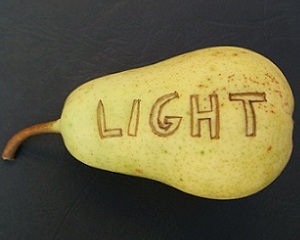 My personal recommendation is to stay away from the products that are “diet”, “light” and that in general make healthy claims. Real healthy foods don’t claim anything (have you ever seen a carrot with the label “diet carrot” or the commercial of a pear saying “pear light”?), while processed foods coming from the industry are usually sold with this kind of tricks.
My personal recommendation is to stay away from the products that are “diet”, “light” and that in general make healthy claims. Real healthy foods don’t claim anything (have you ever seen a carrot with the label “diet carrot” or the commercial of a pear saying “pear light”?), while processed foods coming from the industry are usually sold with this kind of tricks.
Like in the case of organic white flour, the key point is: where are you are focusing? On something that is nutritionally relevant? Well, searching for the diet version of a crappy processed food is not relevant at all, it’s simply wasting your focus on choosing the less worse between two versions, regular and diet, of a food that probably shouldn’t be part of your diet at all.
5. Collect the points
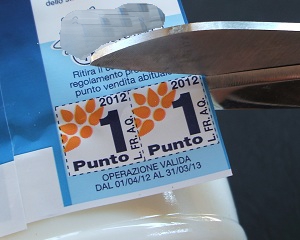 When I was a kid I did many collections of points. With all my snacks, sweets and cereals I “won” a lot of prizes: bags, books, games, clothes. As a conscious adult now I see the deception behind this evil mechanism. The industry marketing strategists have strong reasons to release points and prizes with their food, to name a few:
When I was a kid I did many collections of points. With all my snacks, sweets and cereals I “won” a lot of prizes: bags, books, games, clothes. As a conscious adult now I see the deception behind this evil mechanism. The industry marketing strategists have strong reasons to release points and prizes with their food, to name a few:
- They push you to buy more and more, because you want to reach the desired prize as soon as possible
- They set a deadline for collecting the points and you’re pushed to buy more fast, because you want to reach the points you need before the offering expires.
- They make you loyal to their brand: if you change supermarket or city you will search for the same brand, because you want their points
- They make you round up your expense: sometimes the points are related to the money you spend: if you spent 38 dollars gaining 3 points, why not spending other 2 dollars to gain 4 points.
No thanks, no collections of points for me.
6. Crackers without lard
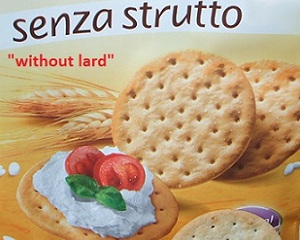 This is the specific case of a food that made me think about this top ten, and it goes in 6th because it’s very interesting. The package of these crackers claims “without lard”. When I saw it in the shelves I thought “what the hell? Is it a privilege now that crackers have no lard in them? To a point that it must be proudly stated in front of the package?” That’s very funny, since actually there should be no reason to put lard in crackers (!) there has never been, there will never be: they are just crackers!
This is the specific case of a food that made me think about this top ten, and it goes in 6th because it’s very interesting. The package of these crackers claims “without lard”. When I saw it in the shelves I thought “what the hell? Is it a privilege now that crackers have no lard in them? To a point that it must be proudly stated in front of the package?” That’s very funny, since actually there should be no reason to put lard in crackers (!) there has never been, there will never be: they are just crackers!
Evidently this company is simply selling white flour based crackers that have no particular healthy merit (again: white flour is a useless food in terms of nutrition) but they really, really wanted to find some positive nutritional side about these crackers so they came out with this. “Hey guys, look at our crackers! We haven’t put pork fat in them, give us a pat on our back!”.
What they are using here, and what many-many-many marketing strategists use, is one of the most typical food advertising tricks you will ever see. It simply consists in not saying anything about the important negative sides of the product (white flour based, salt, additives) and creating and highlighting from nothing unimportant “positive” nutrition facts.
7. The game of %
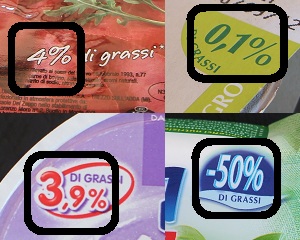 “Contains only” is particularly frequent in the marketing of processed meat, cheese and yogurt. On the package of these products it’s easy to read things like “contains only the 1% fat” or “low in fat”.
“Contains only” is particularly frequent in the marketing of processed meat, cheese and yogurt. On the package of these products it’s easy to read things like “contains only the 1% fat” or “low in fat”.
First of all: who says that 1% is “only”? Actually 1% (or whatever percentage you see) is a lot if the fats are unhealthy fats, like those contained in most processed meats and cheese. “Only” must be contextualized, because used like this on the packages it doesn’t mean anything, it’s just a trick used to convince you that the food is not going to make you fat.
In the right context of nutrition instead, first we consider the kind of fat (is is a good or a bad kind of fat?) and then we consider from what food it comes (who cares if a yogurt has 0.1% fat if the yogurt itself is full of horrible artificial sweeteners?). Following this line it would make perfectly sense to advertise an avocado by proudly saying “it has 58% of great fats”, while it would make perfectly sense either to advertise margarine by cautiously saying “beware it has 1% of bad fats”.
8. Organic crap
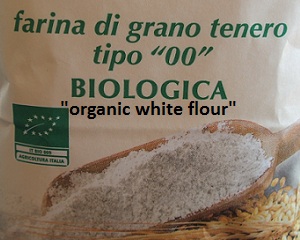 Food advertising tricks in the organic market? Yes, the marketing strategists are able to use to their advantage the good reputation of organic foods to make you buy unhealthy products instead. I am a big supporter of organic aliments, in particular I buy a lot of organic fruits and vegetables. I think that the reduced amounts of pesticides and the more natural production techniques are definitely worth the higher price.
Food advertising tricks in the organic market? Yes, the marketing strategists are able to use to their advantage the good reputation of organic foods to make you buy unhealthy products instead. I am a big supporter of organic aliments, in particular I buy a lot of organic fruits and vegetables. I think that the reduced amounts of pesticides and the more natural production techniques are definitely worth the higher price.
But even the being organic of a food, which is in general a very positive factor, can become a completely unimportant variable when it applies to an intrinsically unhealthy food, like white flour. And the same consideration is valid for all the foods that contain organic refined sugar. “Organic refined” is an oxymoron! Like saying “healthy unhealthy”!
Notice that now almost all the supermarkets have a section for nutrition freaks with healthy stuff, but even in these sections you can find advertising tricks that can push you to buy supposedly healthy foods that are instead sugary crap. For example, who cares if a donught made of refined flour and refined sugar is organic? It’s a donught! It has an high glycemic index, it causes tooth decay, it is fattening and it is unhealthy whether it’s organic or not!
9. Fast food
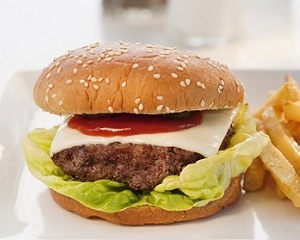 A lot can be said about the advertisement techniques used to sell fast food, but I must admit one thing: the companies rarely make healthy claims about their products (those would be impossible lies to tell in any case, considered how atrocious are the ingredients). No, for a market that is worth many millions around the planet, the strategy is pretty straightforward: take the food, highlight the great taste, be silent about the health issues.
A lot can be said about the advertisement techniques used to sell fast food, but I must admit one thing: the companies rarely make healthy claims about their products (those would be impossible lies to tell in any case, considered how atrocious are the ingredients). No, for a market that is worth many millions around the planet, the strategy is pretty straightforward: take the food, highlight the great taste, be silent about the health issues.
You can be assured that the taste is great: it’s impossible to put that much sugar, salt, fat, flavors in an aliment and not make it taste great. Hamburgers, french fries, sodas, cakes, ice creams practically advertise themselves in the commercials when they appear so tender and juicy, or golden crispy, or fizzy, or colored and creamy.
What is missing -on purpose- in the picture is the heavy price you pay for the short-term pleasure of this taste. While hamburgers and co. are very cheap (health deterioration with fast food is within everyone’s reach) the tax on your body is huge. But of course, you will not hear anything about the long list of medical conditions caused by this crap in your diet.
10. With antioxydants
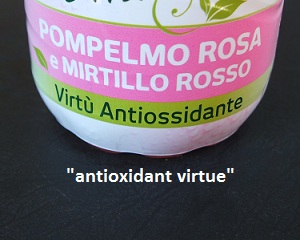 The final spot in this list of the food advertising tricks goes to something liquid: fruit juices and smoothies. The marketing experts use the good nutritional reputation of fruit to create “fruit based” beverages that actually contain minimal quantities of fruit (but this little content is the only one who is highlighted in the package and in the commercials) and, on the other hand, a lot of sugar and chemicals.
The final spot in this list of the food advertising tricks goes to something liquid: fruit juices and smoothies. The marketing experts use the good nutritional reputation of fruit to create “fruit based” beverages that actually contain minimal quantities of fruit (but this little content is the only one who is highlighted in the package and in the commercials) and, on the other hand, a lot of sugar and chemicals.
In the picture beside it’s shown one of these cases. The package states proudly that the juice has some “antioxidant virtue”, while if you turn on the back and see the nutrition facts label you find that there is only a content of …% of fruit, and plenty of added sugar. These few antioxidants have a too high sugar-price in my opinion.
It’s even possible to find fruit juices where the only fruit is the one shown on the label: inside it there are only artificial flavors and chemicals! Unfortunately the law allows that.
The only way not to get deceived by this kind of tricks is to go for 100% smoothies and juices. This is the secure way to know that you are buying really squeezed fruit and not sweetened, colored water.
Conclusion
How did I choose the elements in my top 10 of the food advertising tricks?
I considered these 10 because, even if the set is heterogeneous -some are generic techniques used in the food advertisement, some are the specific cases of certain foods-, I find them particularly insidious. I am sure that they impact a lot of people. It’s easy to fall into these traps if you’re not fully conscious, even when you are just shopping in the supermarket. But if you’ve come so far with the reading, now you are harder to deceive. And next time, when you see these tricks, you can \:-] and XD too.
Notes: this article is a “survivor” of my Nutrition freak project, a website that I created in the past entirely about nutrition and health. After awhile I decided to close that website, and publish my articles on nutrition and health here in my personal blog, together with the other articles on different topics.
Related:
Economy and health, sustainable food production, global food vs local grown
old videos – da caricare
A certain job is performed every day by the media. They suggest and repeat over and over that for our society economic growth is super important.
In this video we’ll discuss how today’s over-focus on the economic growth goes at the expense of other important topics, like health and the quality of our life, and also why it promotes a food production model which is totally not sustainable.
Before we start, here is your question for today: what do you think is the difference between growth and development, of the economy and in general of the society? And which one do we need more? Pause the video, share your ideas in a comment, and come back to see if you guessed what I’m about to say.
In theory, economy is very simple: it’s a science about the desires of people. How people satisfy their desires in the market, trading their resources with other resources they want more.
In practice, economy has become very complicated over the last century, and now it serves mainly the desires of just a tiny fraction of the world population. This happened for a couple or reasons:
– First, economy has been increasingly confused with finance. The media depict it as a series of complex indexes, graphs, numbers that are very hard to understand fully for the average person
– Second, for long time now there’s been a steady pressure to increase the scale of the economy, and make it bigger and bigger, and global.
So, in the rest of this video we’ll see how these changes are impacting our life, in particular we’ll try to understand what is the relationship between the size of the world economies and the food we find in the grocery stores.
We need to be more competitive, we need to increase the profits, the economy needs to grow. These are ritual formulas pronounced by politicians and CEOs of the big corporations. Formulas that are punctually and… more or less mindlessly broadcasted everywhere by the journalists.
But do they actually make sense?
If the economy grows, does it mean well-being for us?
Let’s think about it, today there’s a real pressure over the citizen shoulders to have a compliant economic profile. To have a good social reputation, you must pay all the rates of the mortgage, have a stable job, have a good score with your credit at the bank, and pay all your bills regularly.
But what happens in the meanwhile is that there are a lot of people that are not compliant with many other aspects of their life, especially their happiness and health, which is where we will concentrate here. For example, could it be that there is not such a tight relationship between having great finances and having great health?
Some statistics definitely say so, as some of the countries with the richest economies in the world are pleagud by health problems related to a poor nutrition, like the united states. These are typically the countries where the market logic is global, particularly the food market logic. In these countries fast food is everywhere, and the farmers, instead of selling their food to people, sell their food to corporations. And what do corporations ask them?
Potatoes and apples that all look the same, like plastic balls, all without a single imperfection or, god forbid, a worm. But there’s definitely no risk that a worm would want to eat one of those globalized apples, as they are so sprayed with chemicals that it wouldn’t even recognize that stuff as food.
Under the rules of a global economy, the farmers must respond to the desires of the corporations rather than to the desires of people, and they are pressed to adopt gmo seeds, and to poison their foods with concoctions of chemicals. The same foods are later additioned with other chemicals and preservatives in the industries where they are processed, and finally wrapped with tons of plastic to be sent somewhere on the other side of the planet.
Of course the situation is not only limited to fruit and vegetables, but also to meat, fish, dairy, everything.
So, what are the first features of the global food that we can notice? First, it is frequently unhealthy. And second, it is definitely not sustainable. The global food has a monstruous fingerprint on the environment. And this is because we do really crazy things.
Why is it that here in Italy, we are the largest kiwi producers in the world, and you go to the grocery store and 99% of the times you find kiwi coming from new zealand? Or that we import canned tomatoes from China, while we produce fresh tasty tomatoes ripened at the sun of Sicily?
The crazy phylosophy of a global economy created a system where foods travel back and forth around the planet, they’re rarely eaten in the same region where they’re produced, and this mechanism is of course very taxing for the environment.
But then there is a third, horrible feature typical of the global food.
The waste. Not only the global food is dangerous for our health, not only it is environmentally not sustainable, it’s is also often produced uselessly. This model of production causes an enormous waste in the food produced, simply because the offer (which is the farmer) and the demand (the person who eats the food) are so distant that they can’t communicate directly.
One produces food for an unknown entity which is somewhere else in the world, without even knowing how that entity likes the food, and how much he needs of it. The famous report that came out last year “global food, waste not, want not” highlighted how up to 30-50% of the food produced in the world never reaches a human stomach. Either because it’s wasted at the origin, for poor production methods in the developing countries, or because it’s wasted at the destination, for the consumistic attitude of the customers in the developed countries.
It’s just crazy. That’s why now we start to talk about something that makes much more sense. Let’s make a comparison with the local food.
Food which is grown in the same area where it’s eaten, that doesn’t need to travel for miles to reach the destination. In this scenario the customer can go directly to the farmer to buy her stuff, she can see how the veggies are grown, she can tell directly to the farmer what products she prefers. It’s obvious that in this case things are much easier, more reasonable, and favor the production of natural foods that require less chemicals, plastic, and resources to be delivered.
How do these local grown foods look like?
Well, real apples, potatoes, and other vegetables that are not impregnated with chemicals are not perfect, and you have to remove the part with the worm sometimes. But this happens because, yes, life sometimes requires us to compete, but it’s not a competition for what country has the biggest economy and the biggest banks, it’s a competition between us and the other life forms to access something which is more important and concrete than pieces of paper: real food.
Food is the most important product men produce. Food is the thing we consume daily. But since food started to respond to the logic of a market dominated by a global economy, it became more fake, it started to make us sick, and it started to make the planet sick.
It’s evident that in recent times we’ve been making things in the exact opposite way as it would make sense. Few food corporations are profiting from this big-global-economy model, and a lot of people are being negatively impacted by it.
Now, this situation is not mandatory, there is not any natural reason why the economy must become enormous. In a planet where the physical resources are finite, it doesn’t make sense to press for an infinite growth. At some point we have to stop. Some errors have been made, and they started when the governments began to under-regulate the global economies and to over-regulate the local economies.
These errors brought us to the paradoxical situation where it’s more convenient to import kiwis from new zealand rather than from the farmer next door. But things can change and corrections can still be made.
We can have our health back, we can stop devouring the biosphere by creating a network of local economies. Economies that are closer to the needs of people, in which the food is produced by the farmer nearby with natural methods. GMOs and chemicals are definitely not a necessity.
And here we get to the initial question: do we need growth or development?
It’s obvious that an endless growth in a planet with finite resources is impossible. And if the resources remain the same, while the economy keeps on increasing its size, the only possible result is that the economy loses contact with the reality. And it becomes just an abstract system built on pieces of paper with no value.
So how do we avoid this situation? How do we avoid the paradox of rich economies sided by unhappiness, bad health, and the series of other problems that we didn’t discuss in this video, since here we’re focusing only specifically on health?
The shift in mindset that we need is to understand that more than growth we need development. That’s what will bring us well-being: developing towards a system which is near people’s needs, where resources are used more effectively for the benefits of many, possibly everybody.
On a final note, before closing this video, I want you to reflect on something. It’s been awhile since we started to give this exxaggerate attention to the economy based on pieces of paper. And since then, we’ve been neglecting not only our health, but a lot of other disciplines, like art, phylosophy, architecture. The ancient civilizations, like Romans, Egyptians, Greeks produced incredible wonders, think to the Coliseum, or the pyramids, with technologies that were ridiculous compared to our present technologies.
And today, we have an enormous potential and what are we producing? What are we leaving as heritage to the future generations? Maybe it’s time to worry less about money and start again to worry about creating beauty! What do you think?

